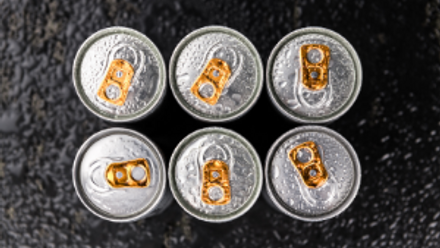If your child often complains of tummy pain, random rashes, hives, itchiness, or a blocked/runny nose - and no one can figure out why - it can feel overwhelming. One possible (and often overlooked) cause is histamine intolerance.
In this guide, Specialist Dietitian for Children & Parents Nishti Udeh will help you understand what HIT is, the signs to look for, how it's diagnosed, how to support your child, and when to seek expert help.
What is histamine intolerance?
Histamine is a natural compound that helps with digestion, immunity, and brain function. Some children, however, can't break it down properly. When histamine builds up in the body, it can trigger a wide range of symptoms, sometimes severe.
This is called histamine intolerance (HIT). While it is well-documented in adults, HIT is increasingly recognised in children. Interestingly, paediatric HIT appears slightly more common in boys.
The challenge is that many HIT symptoms overlap with other conditions, such as allergies, eczema, tummy bugs, or simply normal childhood fussiness. This overlap means HIT is likely underdiagnosed, making parental instincts incredibly important.
Tip: HIT is also common in children with suspected or confirmed mast cell activation syndrome (MCAS). You can learn more about this in our blog here.
How histamine works in the body
Histamine helps the immune system respond to infections and allergens, supports digestion, and communicates with the brain. Two key enzymes help break it down:
- DAO (Diamine Oxidase): Works mainly in the gut
- HNMT: Works mainly in tissues like the brain
If DAO levels are low, histamine can accumulate - especially after eating high-histamine foods - causing mild to severe symptoms. In some studies, up to 8% of children with chronic abdominal pain and diets high in histamine show reduced DAO activity.
Signs of histamine intolerance in children
Symptoms of HIT can mimic other conditions, which is why it is often missed. Children may experience:
- Digestive issues: bloating, nausea, vomiting, diarrhoea, or ongoing tummy pain
- Skin reactions: hives, itchiness, rashes, or eczema flares
- Breathing problems: wheezing, coughing, or shortness of breath
- Other symptoms: headaches, dizziness, or a fast heartbeat
HIT is not just a gut issue. Skin, breathing, and cardiovascular symptoms are also common.
Evidence note: Some children with eczema may see their skin worsen after eating histamine-containing foods. While studies suggest this could affect a meaningful number of children, strong evidence is still limited, and bigger, high-quality studies are needed to confirm this link.
How is histamine intolerance diagnosed?
Diagnosing HIT in children can be tricky because there is no gold-standard test. At our clinic, we approach it carefully:
- Observation of symptoms: Gut issues, eczema flares, itchiness, and rashes.
- Rule out food allergies: Both IgE-mediated and non-IgE-mediated food allergies must be excluded first. Many children with delayed allergies also present with histamine intolerance, and distinguishing the two avoids unnecessary restrictions. Working with an allergist or paediatric dietitian with knowledge in this area is essential.
- Trial of a low-histamine diet: Removing some high-histamine foods to see if symptoms improve.
- DAO testing: Helpful but not definitive. Some children with normal DAO levels still benefit from dietary changes.
- Multiple symptom types: Children usually show at least two symptom categories (gut + skin or breathing).
Keeping a food and symptom diary is crucial to identify patterns and triggers. Some clinicians may use histamine provocation tests, but their reliability in children is debated.
Can histamine intolerance happen with other conditions?
Yes. HIT often overlaps with food allergies, immune, or gut-related conditions, which can make it harder to detect. Children with HIT may also have:
- Eczema
- Hay fever
- Asthma
- Food allergies
- Coeliac disease
Reduced DAO activity may contribute to symptom flare-ups. Doctors are increasingly considering DAO as a marker of gut inflammation, not just HIT.
Supporting your child
Low-histamine diet
Some high-histamine foods can trigger symptoms, including tomatoes, aubergine, spinach, bananas, fermented foods, aged meats and cheeses, and leftovers older than 24 hours.
Context matters: Mild reactions, such as a small mouth rash are not always a reason to eliminate the food completely. We assess overall pattern and severity of symptoms before recommending dietary changes.
Support gut health
A healthy gut strengthens the lining, reduces histamine release, and supports DAO enzyme activity. Fibre-rich, low-histamine foods such as kale, brown rice, apples, and carrots are excellent choices.
Fun fact: Fibre feeds gut bacteria that produce butyrate, a short-chain fatty acid that reduces inflammation and keeps mast cells calm.
Freshness matters
Histamine builds up in food over time. To reduce exposure:
- Use fresh ingredients whenever possible
- Eat cooked food within 24 hours
- Freeze leftovers promptly
- Avoid slow-cooked and fermented dishes
Other helpful tools
- Antihistamines (only under medical guidance)
- DAO supplements (evidence in children is limited)
- Stress reduction, consistent sleep routines, and gentle movement
Supporting your child emotionally
Living with food restrictions can be challenging, especially for children with HIT or food allergies. Food refusal and food anxiety are very real, and parents should be mindful of not over-restricting their child's diet without expert guidance. Overly limiting foods can worsen symptoms, create nutrient deficiencies, and increase mealtime anxiety.
Parents can help children cope by:
- Validating feelings: It's okay for children to feel frustrated, upset, or anxious about certain foods.
- Creating predictable meal routines: Structure around mealtimes can reduce anxiety and make children feel safer.
- Celebrating safe foods: Encourage exploration of textures, flavours, and new recipes within the safe food list.
- Seeking professional support: Work with a specialist dietitian or allergist to ensure your child's diet is balanced and appropriate, and to gradually reintroduce foods safely when possible.
Tip: Early support from professionals can prevent long-term food anxiety and promote a healthy relationship with eating.
When to seek help
If symptoms persist or your child's food list is shrinking, a specialist paediatric dietitian can help:
- Build a safe, balanced low-histamine plan
- Identify hidden triggers
- Avoid unnecessary restrictions
- Support safe reintroduction of foods
Frequently asked questions (FAQs)
Q: My child reacts to many foods. Where do I start?
A: Start with a food and symptom diary and work with a professional who can assess if it's allergy, HIT or something else.
Q: Can babies show signs of HIT?
A: Yes, sometimes as early as 6 months. Speak to an allergy dietitian.
Q: Could my breastfed baby react to histamine in my diet?
A: Rare, but not impossible from what we see in clinical practice. Speak to a dietitian if concerned.
Q: Is HIT genetic?
A: Sometimes. It can also be triggered by gut issues, medications, or nutrient deficiencies.
Q: Is HIT linked to eczema?
A: Histamine can worsen eczema in some children, but it is not the only reason, and strong evidence is still limited.
Remember: HIT is common in children with suspected or confirmed MCAS and may co-exist with food allergies. Learn more in our blog here.
References
Hoffmann KM, Gruber E, Deutschmann A, Jahnel J, Hauer AC. Histamine intolerance in children with chronic abdominal pain. Arch Dis Child. 2013 Oct;98(10):832-3. doi: 10.1136/archdischild-2013-305024. Epub 2013 Aug 30. PMID: 23995079.
Fischer K, Jones M, O'Neill HM. Prevalence of Intolerance to Amines and Salicylates in Individuals with Atopic Dermatitis: A Systematic Review and Meta-Analysis. Nutrients. 2025; 17(10):1628. https://doi.org/10.3390/nu17101628
Nazar W, Plata-Nazar K, Sznurkowska K, Szlagatys-Sidorkiewicz A. Histamine Intolerance in Children: A Narrative Review. Nutrients. 2021; 13(5):1486. https://doi.org/10.3390/nu13051486
Shulpekova, Y., Nechaev, V., Popova, I., Deeva, T., Kopylov, A., Malsagova, K., Kaysheva, A., & Ivashkin, V. (2021). Food Intolerance: The Role of Histamine. Nutrients, 13. https://doi.org/10.3390/nu13093207.
Zhao, Y., Zhang, X., Jin, H., Chen, L., Ji, J., & Zhang, Z. (2022). Histamine Intolerance—A Kind of Pseudoallergic Reaction. Biomolecules, 12. https://doi.org/10.3390/biom12030454.
Folkerts J, Stadhouders R, Redegeld FA, et al. (2018). Effect of Dietary Fiber and Metabolites on Mast Cell Activation and Mast Cell-Associated Diseases. Frontiers in Immunology, 9, 1067. https://doi.org/10.3389/fimmu.2018.01067







